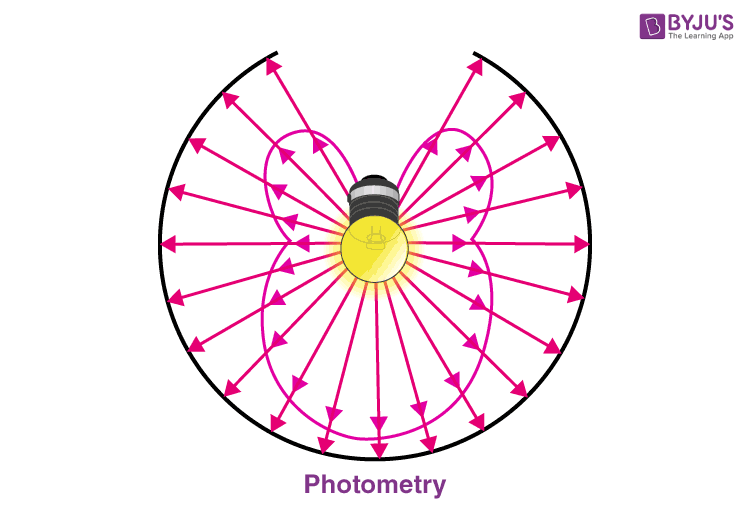
In optics, the science of measurement of the light is known as Photometry. It also measures the human visual response to light. As the eye is the most complex organ in the human body, it is really a difficult task to study the eye. It involves the meeting of many disciplines: physiology, psychology, and physics them.
The basic unit of measurement used in photometry is the lumen. This term is related to its radiometric analog, the Watt.
The measurement of the brightness of the light which a human eye can perceive is called Photometry. It is different from radiometry. Radiometry involves measuring and predicting levels of optical radiation.
In the case of modern photometry, the radiant power at every wavelength is weighted, based on the human brightness sensitivity, by a luminosity function. The weighting functions are of two types such as photopic sensitivity function or the light conditions and scotopic function or the dark conditions. In this case, the photopic sensitivity function is used as the weighting function but sometimes the scotopic function is also used a the weighting function in the same way.
Human Eye:
The human eye reacts differently to different wavelengths of visible light. Photometry depends on this phenomenon of how sensitive the human eye is for a wavelength. A standard measure of the response of the human eye to light of different wavelengths is known as luminosity function.
The eye responses as per the function of wavelength when it is adapted to light conditions (photopic vision) and dark conditions (scotopic vision).
Photometry is primarily based on photopic responses. Thus, the photometric measurements may not exactly predict the discerned brightness in dim lighting conditions. For example: under moonlight or starlight.
History:
It was only in 1924, photometry becomes a modern science when the Commission Internationale de l’Eclairage (CIE) met to define the response of the average human eye.
The Commission measured the light-adapted eyes on a group of people and jotted down the data in a photopic curve. The curve revealed that people responded strongest to the colour green, and are less sensitive to the spectral extremes, red and violet.
Stay tuned with BYJU’S to learn more about photometry, the human eye, and much more. Also, register to “BYJU’S – The Learning App” for loads of interactive, engaging Physics-related videos and an unlimited academic assist.
Frequently Asked Questions – FAQs
What is photometry?
What is the basic unit of measurement used in photometry?
The basic unit of measurement used in photometry is the lumen.

Comments